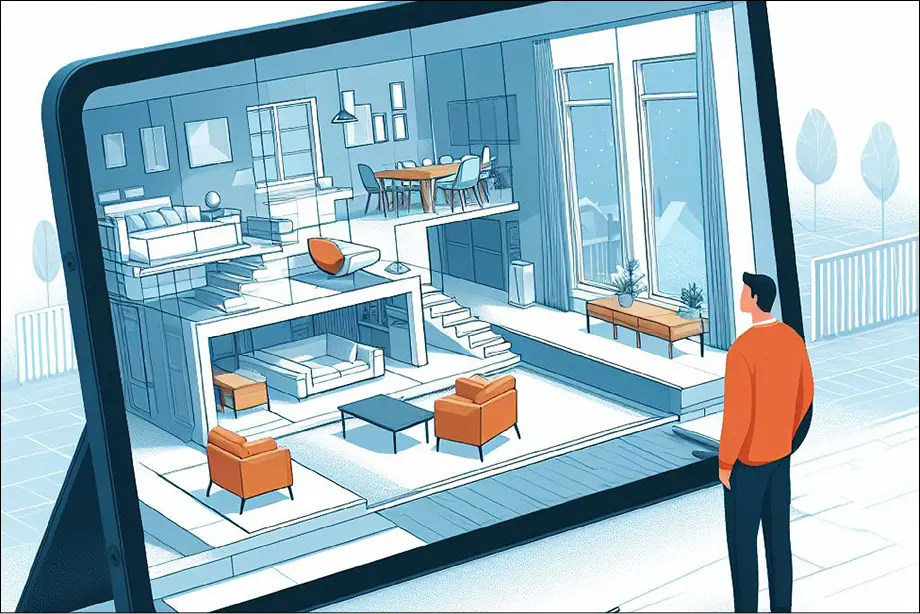AI Insights, Real Stories, and Game-Changing Guides for the Next-Gen Furnishing Professional.
The Future of Furnishing Business: From Manual Processes to Full Automation

The furnishing industry is undergoing one of the biggest transformations in decades. What was once a sector driven by manual coordination, handwritten orders, and physical site visits is now shifting toward streamlined, tech-enabled operations. Whether you’re an interior designer, furniture retailer, project manager, or turnkey contractor, the way furnishing projects are executed today is vastly different from how they will be done in the next 5–10 years.
Automation, digital project management, and AI-driven tools are rewriting the rules of the furnishing business. Companies that embrace this shift early are gaining massive advantages—higher efficiency, fewer errors, faster delivery timelines, and more profitable operations.
In this blog, we explore how the furnishing business is moving from manual processes to full automation, why this shift is essential, and how it will shape the future of the industry.
1. The Limitations of Manual Processes in the Furnishing Industry
For years, the furnishing and interior industry has operated with high dependency on human coordination. Teams communicated through WhatsApp chats, phone calls, verbal instructions, spreadsheets, and handwritten notes. But these manual workflows created several challenges:
1.1 Higher chances of miscommunication
In large furnishing projects, multiple people—designers, carpenters, vendors, installers, delivery teams—work together. When communication happens manually, the risk of missing details, wrong interpretations, or overlooked instructions becomes very high.
1.2 No real-time project visibility
Project managers often rely on site visits or team updates to know what’s happening. This leads to delays, unexpected surprises, and inconsistent execution.
1.3 Difficulty in tracking materials
Manual inventory and material tracking often leads to issues such as:
- Missing items
- Duplicate orders
- Delayed deliveries
- Overstock or shortages
These directly affect the timeline and profitability of the project.
1.4 Slow approval cycles
Client approvals, layout changes, and design updates take longer when handled manually, especially when documents are shared through multiple platforms.
1.5 Workflow inefficiencies
Because every process is handled manually, companies spend extra time on coordination instead of focusing on creativity, innovation, or scaling their business.
2. The Shift Toward Digital Transformation
The furnishing industry realized the need for digital tools when project volumes started increasing and timelines became more demanding. The benefits of digital transformation became clear:
2.1 Automated task management
Tasks no longer need to be manually assigned or tracked. Digital platforms now help teams automatically receive updates, deadlines, and status changes.
2.2 Centralised project dashboards
Project managers can see every detail:
- What is completed
- What is pending
- Who is responsible
- Which material is required
- Which task is delayed
This eliminates the guesswork and improves accountability.
2.3 Digital material & purchase tracking
Systems can track stock, manage vendors, generate purchase orders, and send alerts when materials are delayed or missing.
2.4 Seamless client collaboration
Clients can view progress, approve designs, and review updates without endless back-and-forth communication.
2.5 Reduction in operational errors
Automation removes human dependencies, reducing mistakes that cause rework, cost increases, and reputation damage.
3. The Rise of Full Automation in Furnishing Projects
The future of the furnishing business is not just digital—it’s fully automated. This new era focuses on combining technology with real-time data, AI, IoT tools, and smart workflows.
3.1 Automated Scheduling & Resource Allocation
AI-driven tools will automatically allocate manpower based on project workload, deadlines, and availability. Carpenters, installers, and vendors will be assigned tasks without manual intervention.
3.2 Automated Inventory Forecasting
Advanced systems will forecast material requirements using past data, reducing delays caused by shortages
3.3 AI-Driven Design to Execution Workflow
Design concepts will be directly connected to execution plans, enabling quick transitions from ideas to real-world installation.
3.4 IoT-Based Site Monitoring
Sensors and digital tools will provide real-time data about:
- Site progress
- Installations
- Material movement
- Workforce attendance
This eliminates the need for unnecessary site visits.
3.5 Automated Client Reporting
Clients will receive automated daily or weekly updates with images, progress bars, and timelines.
3.6 Smart Coordination Between Teams
Digital platforms will ensure each team—from procurement to carpentry—receives updates instantly, reducing delays and dependency on a single project manager.
4. Why the Future Belongs to Fully Automated Furnishing Businesses
Companies adopting automated systems are witnessing major benefits:
4.1 Increased Profit Margins
Automation reduces wastage, delays, and rework. This directly impacts profitability.
4.2 Faster Project Delivery
When workflows are automated, tasks are completed faster with fewer dependencies.
4.3 Ability to Handle More Projects
With automation, businesses can scale operations without increasing manpower.
4.4 Higher Client Satisfaction
Clients enjoy transparency, real-time tracking, and timely delivery—boosting referrals and repeat business.
4.5 Competitive Advantage
Those who adopt automation early will lead the industry and outgrow competitors.
5. The Road Ahead: What to Expect in the Next 5 Years
The furnishing industry is entering a new phase where technology will become a core part of daily operations.
Here’s what to expect in the near future:
- Fully automated project dashboards
- Minimal manual communication
- AI-based quality checks
- Predictive project timelines
- Automated vendor negotiation tools
- End-to-end digital documentation
- VR-based design approvals
- Zero dependency on spreadsheets or WhatsApp chats
The businesses that accept this shift will emerge as industry leaders.
Conclusion
The furnishing industry is rapidly moving from manual, time-consuming processes to a fully automated future that prioritises efficiency, transparency, and scalability. Companies that adopt automation now will experience smoother workflows, faster project execution, and improved profitability. Solutions like LetMeFurnish are playing a crucial role in this transformation by helping furnishing businesses streamline operations, reduce errors, and manage projects seamlessly from start to finish.




